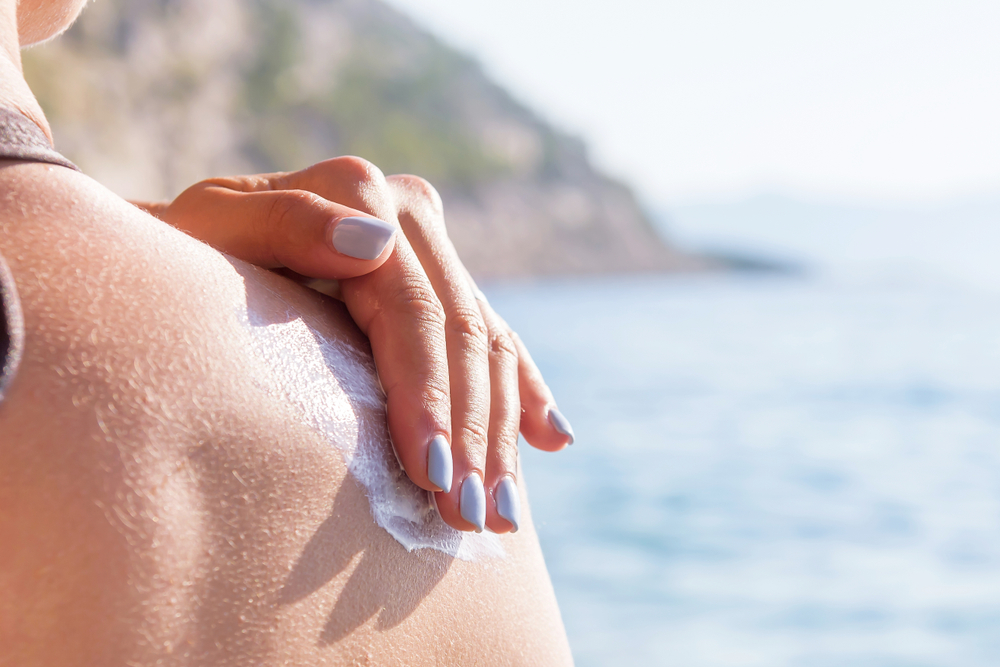Ban some sunscreens? Controversial ingredients not yet on Southwest Florida’s rule-making radar
Some environmental advocates would like to add another item to Southwest Florida’s things-to-worry-about list: sunscreen.
Actually, they’re specifically targeting octinoxate and oxybenzone, two common ingredients in many sun-blocking products. They’ve been blamed for harming the Keys’ cherished coral reef, the only one in the continental United States, and may also accumulate in plankton, the tiny organisms that are critical to the aquatic food web.
That’s why even though Southwest Florida doesn’t have a barrier reef system, the substances don’t belong in its waters, said Mill McCleary, executive program director of the nonprofit Reef Relief.
“One of the things we found in some of the research is these toxins could be getting into plankton,” McCleary said. “In intense concentrations, especially where there’s beaches, that means there’s the possibility for bioaccumulation with lots of different marine animals.”
Earlier this month, Key West banned any products containing the two ingredients, after Hawaii did last summer. So far, neither Lee County nor any of its municipalities have taken similar action. In fact, “A sunscreen ban is not being discussed at a local level right now here within the county,” said Lee spokeswoman Betsy Clayton.
McCleary said it should be – and the rest of the nation should follow suit. “To … pass a state law would be the ultimate goal for Florida,” McCleary said, “and some of our board want us to take it straight to Congress.”
But some scientists say the region has vastly more pressing concerns to tackle, including “the major threat of warmer oceans and lower pH (ocean acidification),” wrote marine research scientist Rick Bartleson, who works for the Sanibel-Captiva Conservation Foundation, in an email.
“Erring on the side of coral reefs is understandable,” he said. But if the legislators focus on sunscreen and not carbon dioxide emissions, which contribute to the greenhouse effect and rising temperatures, “They are greenwashing themselves,” he wrote. “We’re doing nothing about CO2 emissions, while heat bleaches the reefs white.”
The banned substances work by blocking the wavelengths of ultraviolet light that cause skin damage, from sunburn to skin cancer. McCleary is anti-octinoxate and oxybenzone for other reasons as well. Both can cause skin allergies and irritation, he said, in addition to the potential damage to plankton.
The Personal Care Products Council, a national industry group that serves sunscreen manufacturers, did not immediately respond to a request for comment.
The ingredients’ potential for harm has been well-established by scientific experiments, said James Douglass, associate professor of marine and ecological studies at FGCU.
Although the evidence of their dangers has come mostly from the lab, “That’s because it would be unethical to do field experiments on already endangered coral reefs,” he said. “However, it’s reasonable to make extrapolations from the laboratory experiments to the harms that we would expect in the wild.”
For example, Douglass said, concentrations of oxybenzone at popular swimming beaches in Hawaii have been shown to be 10 times higher than levels that harm corals in the laboratory, and in other parts of the world, the concentrations of oxybenzone observed in the wild are even higher. “So we are pretty darn sure that it is harming corals in the world,” he said.
The ingredients have several damaging effects, Douglass said, including contributing to coral bleaching, which happens when “corals get stressed out and lose the symbiotic algae that they need to survive,” Douglass said. Normally caused by high temperatures and other environmental imbalances, “Octinoxate and Oxybenzone make it so that coral bleaching will happen even when it’s not that hot.”
They also cause genetic mutations and hormonal imbalances in coral larvae, leading to deformities and failure to successfully settle and grow into adult corals, he said.
The good news, McCleary said, is that alternative sunscreens are readily available.
“We went around and surveyed Publix, CVS, Walgreens and Winn-Dixie and found that in all of those places, 49 percent of their products are already ocean-friendly,” he said. Brands that make sunscreen without the ingredients include Coppertone, Panama Jack and Australian Gold.
“In Walgreens, they sell an ocean-friendly brand right now that is two for $5,” he said. “So it’s also affordable.”

